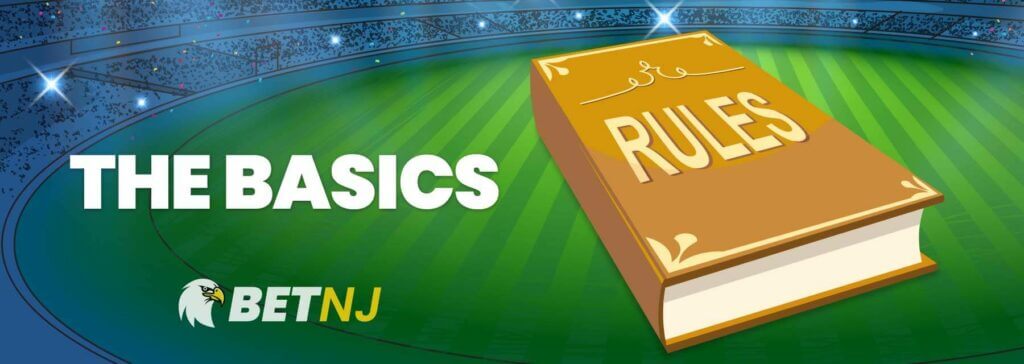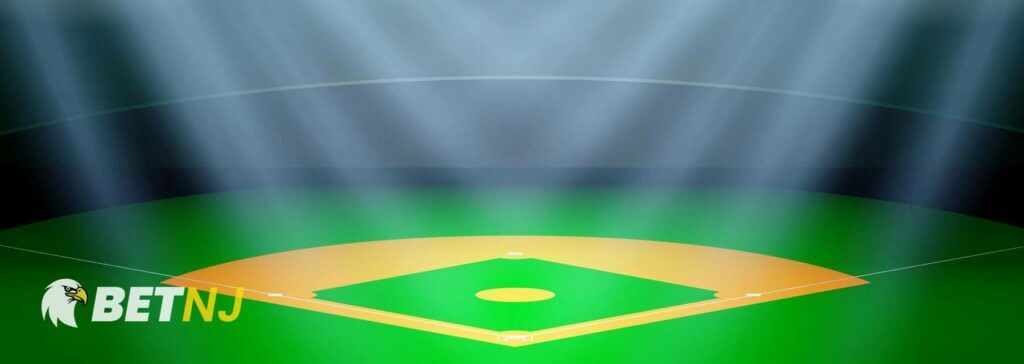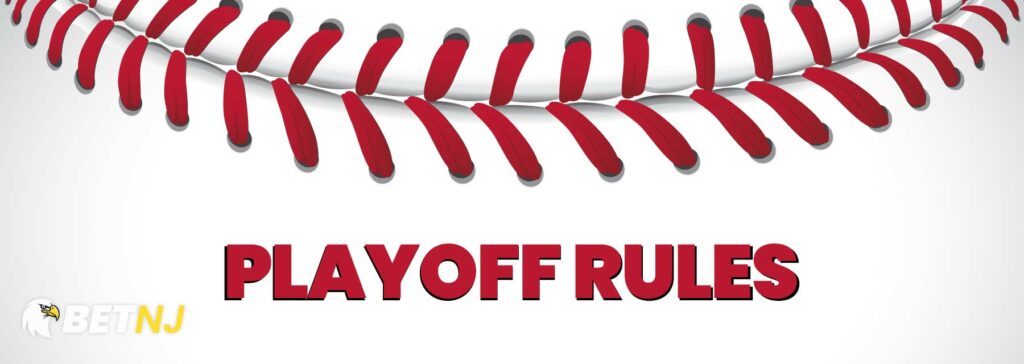Basic Rules of Baseball
The basic MLB rules of playing baseball seem simple enough, however, it can get a bit more complicated as you dive in. To achieve the best betting strategy, you should know all the rules.

The pitcher throws the ball, allowing the batter to hit the ball. The opponent in the field is trying to stop the batter from running around the bases and scoring a run.
- How many pitchers are allowed?
- How many bases can they run when the ball is hit?
- How many opposing players are in the field and how do they stop the batter from scoring runs?
- How many attempts are there to hit the ball?
- When does the opposing team get a chance to bat?
These are the basic questions one would ask the very first time watching a baseball game. Understanding the MLB rules is essential for MLB betting.
Number of Players and Innings
In standard baseball MLB rules, there are two opposing teams of 9 players. The roster may have 20 to 30 players, but only 9 players can take the field. They are in the field to play defense or to stop the opponent from scoring runs.
Unlike other sports, the duration of the game is not determined by a play clock. A game has nine innings. Each inning has a top and bottom half.
The game begins at the top of the first inning with the away team batting, while the home team pitches to the opposing batters and defends the field.
The sides switch from defense to offense in the bottom half of the inning once the batting team has 3 outs.
Balls, Strikes, and Outs
An “out” in baseball is a failed attempt by a batter to reach a base.
The pitcher is the key position for stopping an opposing team from scoring.
An out can happen in the following ways:
- A defensive player catches the ball
- The runner hits the ball on the ground in the field of play and then a defensive player throws the ball to a base before the runner reaches that base.
- The pitcher throws 3 strikes to an opposing batter.
A strike is either:
- a swing and a miss by a batter
- a ball hit into foul territory (only the first two strikes, you can’t foul out)
- a pitch that is within a designated “strike zone”, and the batter does not swing
The strike zone is the area where a batter should be able to hit the ball.
A pitch that is thrown to a batter who is not within the strike zone – and where the batter does not swing and miss – is a “ball”.
If the pitcher throws 4 balls, the batter is awarded first base. In baseball, an umpire calls balls and strikes.
The offense tries to hit the ball into the field. If the defense fails to get an out on that hit, the batter becomes a runner.
They can then progress through the 3 bases in a counter-clockwise direction.
The defense can stop the batter if they can tag the runner with the ball. However, if a runner stays on a base, the runner is safe.
Hits and Runs
Single – A hit into the field where a runner can safely reach only first base.
Double – When a runner can safely reach second base.
Triple – When a runner can safely reach third.
When safely on the base, a runner can wait for teammates to get a hit and allow the base runners to advance. Offensive players can also steal a base if they’re fast enough.
Inside the Park, Home Run – A hit into the field where a runner can reach all 3 bases and return home safely.
Home Run – A hit over the park’s outfield fence in fair territory. The hitter may run to all three bases and return home.
A run is scored anytime a runner safely reaches home plate. The team with the most runs at the end of 9 innings is the game’s winner.
If at the end of 9 innings there is a tie in runs scored, the game goes into “extra innings” until there is winning total.
Field Dimensions
Fair territory refers to the area of the field between two baselines.
The right-side baseline extends from home plate along the first base to the right-field foul pole.
The left-side baseline extends from home plate along the third base to the left-field foul pole.
The bases are set 90 feet apart in MLB. The MLB rulebook requires the bases to be white in color and square where each side is 15 inches in length.
The home plate resembles a square plate with two corners removed and also white. The wide front of the plate is 17 inches wide and is a part of the umpire’s strike zone.
The usual strike zone is somewhat objective. It is usually considered as an area that is as wide as the plate between the batter’s knees and shoulder. The umpire stands there and calls balls and strikes.
The Ballparks
The outfield dimensions in MLB will vary from ballpark to ballpark. This is one of the aspects of MLB that make the game interesting.
There are currently several indoor or partially covered ballparks where MLB teams call home. The distance to center field or the height or type of outfield fence is different in every MLB ballpark.

Wrigley Field in Chicago has an ivy-covered wall in left field.
The “Green Monster” in Fenway Park in Boston has a giant green wall in left field.
The right field in Yankee Stadium has an unusually short distance from the home plate.
MLB largely differs from other professional sports. The unique features of each park and various outfield dimensions keep the game interesting.
There are MLB rules for minimum field dimensions, however, parks are each a little different in how they comply with these distances.
For example, the distance from the home plate to the center-field must be at least 400 feet. But the distance could be further and this does not address the type of fence or wall.
Specific MLB Rules
The actual rule book is about 200 pages long and covers every aspect of the game. There even are rules that define the color of the players’ shoes!
MLB rules also mandate wooden bats like those used when the league began.
Understanding MLB rules can provide a better understanding of the game and thus, a better understanding of MLB betting.
The Designated Hitter Rule
Basic MLB rules call for only 9 players in the lineup. In 1973 the American League adopted a rule that allows teams to add a specialized position known as the designated hitter.
This added position is most often used to substitute for the pitcher in the batting order.
The pitcher is a specialized position that needs to throw strikes and get outs for the defense. Rarely is the team’s pitcher a strong hitter.
The result of this rule is more hits and runs scored in the American League. In the National League, the pitcher takes a turn at bat consistent with the original rules of baseball.
Rules to Speed Up the Game
There has been a lot of debate on ways to speed up MLB games to meet the pace demands of today’s fans. Fans enjoy the action.
When pitchers take extra time to adjust and contemplate their next type of pitch, the game can take a while.
There is an existing rule stating that a pitcher has 12 seconds between pitches if there are no runners on base. However, this rule is not enforced.
The average between pitches is about 20 seconds with some pitchers taking up to 29 seconds.
MLB pitch counts can exceed over 100 in an average game, these few extra seconds can add up to a lot of time.
Although the umpire can give pitchers a warning, this 12-second rule is not enforced.
New MLB Rules
There are some new rule changes that, when enforced, speed up the game.
A limit of mound visits to 6 per 9 innings is a rule change that will speed up the game. A mound visit is when another player or coach goes to the mound to discuss strategy with the pitcher.
Often, this is a way to provide time for a relief pitcher to get ready to come into the game.
A new rule for 2020 requires relief pitchers to face a minimum of 3 batters. This is a very significant change intended to speed up the game but will also increase the runs scored.
This rule change to face at least 3 batters will eliminate pitching specialization tactics used for many years.
Pitching specialization is having a relief pitcher face one batter. This is usually due to specific pitching advantages. The play would then stop for a different relief pitcher with a different advantage over the next batter.
MLB Playoff Rules
These new rule relief pitching changes apply to the MLB Playoff rules as well. We can expect a shorter game duration and an increase in average runs scored. This applies to this year’s Division, League, and World Series games.

Other MLB playoff rules include the following.
- The process of deciding which World Series team will have home-field advantage in the 7-game series.
The rule states that the league team that wins the MLB All-Star game receives the advantage. This is very different from other professional sports and adds value to winning the All-Star game.
- The rules for selecting the qualifying teams for the MLB playoffs.
The predetermined brackets include a Wild Card game, the Division, and League Series and finally the World Series.
MLB Playoff Brackets
| Wild Card | 1 game playoff | 2 Best win/loss records of non-Division winning teams |
| Division Series | Best-of-5, 2-2-1 format | Best win/loss record of 3 Division Winners faces the Wild Card Winner |
| League Championship Series | Best-of-7, 2-3-2 format | Division Series Winners play for League Championship |
| World Series | Best-of-7, 2-3-2 format | American League versus National League Champs |
Under the current MLB playoff rules, a total of 10 teams will qualify. In each league, 2 teams will qualify for the Wild Card round. 3 Division winners will participate in the 5 game division series.
Home Field Advantage
Players strive for the home-field advantage as it dramatically helps their game. The win/loss record during the MLB season is important.
It affects the division series bracket and the possibility of home-field advantage.
For example:
Because of the 2-2-1 format for the Division Series, the team with the better win/loss record during the regular season will have the first two games and last game at home. This is a home-field advantage of 3 games to 2.
The Win/Loss results of the League champions during the regular season does not determine home-field advantage for the World Series.
Major League Baseball has a unique rule to award home-field advantage for the final series. The MLB All-Star game that is held in mid-July is used to determine which League will have the advantage.
The All-Star Game is a match of the best players in the National League versus those from the American League.
The team that wins in the MLB All-Star Game wins the World Series home-field advantage for its League champ.
In Conclusion
Professional sports leagues develop standard rules to create an organized structure.
A competitive framework is achieved when standards are evenly applied. It is important to understand MLB rules to get the best results for NJ sports betting online.